Sierra Nature Notes Archive: Page 1
Twentieth
Century Glacier Change in the Sierra Nevada, California Several hundred permanent ice fields and glaciers dot the Sierra Nevada. All of them began to form during the Little Ice Age when the Sierra's climate began to cool in the 1300s. They reached their maximum in the 1850s. In the last few decades most have begun to shrink rapidly. Researcher Hassan Basagic introduces us to the Sierra's glaciers and the direction his research will take. |
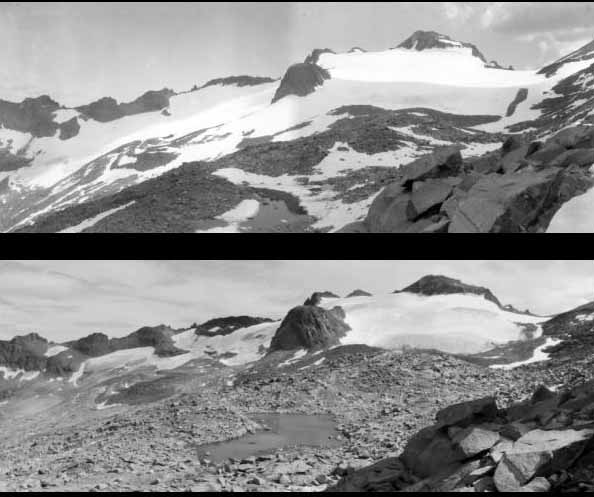 |
||
With
Recovery Efforts Underway, Danger still exists for the frogs But now the bad news: while efforts to restore habitat in some lakes and streams is meeting with great success, a new disease is emerging which threatens those tenuous gains. The Chytrid fungus is wiping out populations throughout the Sierra and not much is known about how it's killing frogs.
|
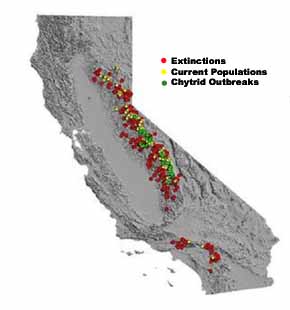 |
||
2007
Report on Analysis of Water Quality of Lakes and Streams
in Sequoia and Kings Canyon National Park Dr. Derlet has now accumulated over a decade of extensive water quality sampling of both Yosemite and Sequoia Kings National Parks. Increasingly, he's looking at patterns emerging from his data showing significant differences in water quality depending on whether it receives little or no visitor use; heavy visitor use and use by stock (horses and mules). He's also noting the relative prevalence of algae in lakes and streams and speculates on its causes in otherwise pristine Sierra water.
|
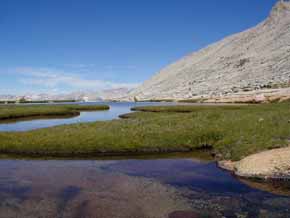 |
||
Twentieth
Century Glacier Change in the Sierra Nevada, California Several hundred permanent ice fields and glaciers dot the Sierra Nevada. All of them began to form during the Little Ice Age when the Sierra's climate began to cool in the 1300s. They reached their maximum in the 1850s. In the last few decades most have begun to shrink rapidly. Researcher Hassan Basagic introduces us to the Sierra's glaciers and the direction his research will take.
|
 |
||
Sierra
Nevada Climate With recent news reports of pikas disappearing from their former range and lower elevation critters moving up in elevation, what does it mean relative to long-term climatic change in the Sierra? Scott Stine compares then and now.
|
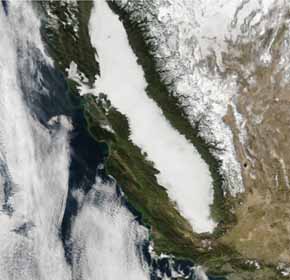 |
||
2006
Report on Analysis of Lakes and Streams in Kings Canyon National
Park for Coliform Bacteria and other Microorganisms What's that foam hikers see at some lake outlets? Although Dr. Derlet again reports good news about Sierra water in tests he conducted in Sequoia and Kings Canyon National Parks, he expresses concern about algae growth and foam on some lakes and streams.
|
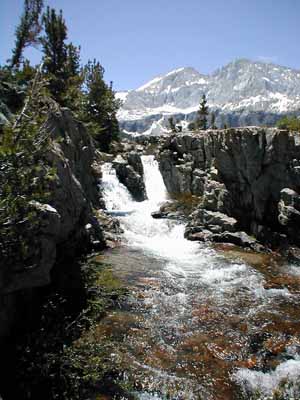 |
||
The
Mountain Yellow-legged Frog is Recovering in Sequoia and Kings
Canyon National Parks
|
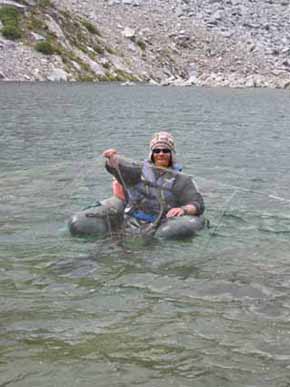 |
||
Winter
Wildlife in Tuolumne Meadows |
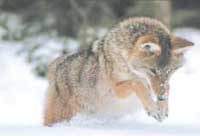 |
||
Partners
in Protection
|
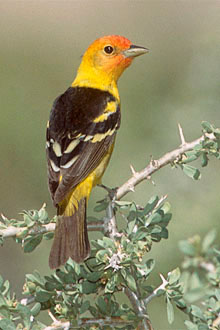 |
||
Local
habitat is related to the broader geographic ranges of plants
|
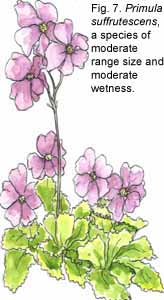 |
||
Using
bat assemblages as a measure of ecosystem health Quick: how many species of bats in Yosemite? What's the second largest order of mammals in North America? Why do we know so little about them? Bats are a critical part of the Sierra ecosystem and, because they eat insects, also play a vital role in indicating the health of an ecosystem. |
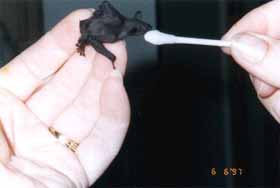 |
||
“Live
fast, die young” also applies to forests How might global climate change affect forests? How fast a forest renews itself may affect how fast it will respond to the climate changes expected in the future. Environmental changes that increase forest productivity may also increase forest turnover rates, with the potential for cascading effects on wildlife, biodiversity, and forest carbon storage.
|
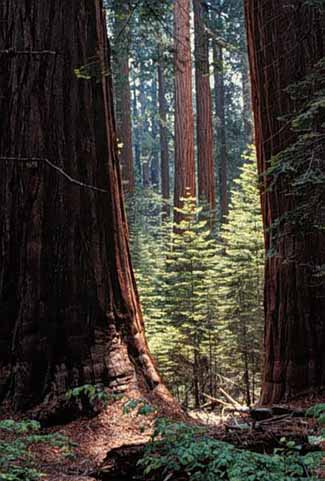 |
||
When
is the best time to cross a mountain stream? Gnarly old rangers will tell you to cross spring streams early in the morning when the water is lowest. As T.H. Huxley once observed, there is nothing more tragic than “the slaying of a beautiful hypothesis by an ugly fact.” Jessica Lunquist has been studying snowmelt in the Sierra for several years and finds that such expert advice ain't necessarily so.
|
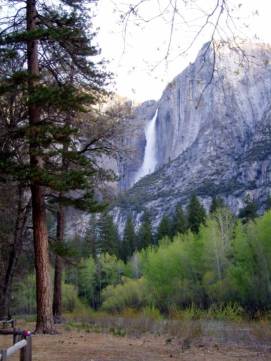 |
||
High
Sierra Water: What is in the H20? After decades of too often shrill warnings about Sierra water, Dr. Derlet continues to lower the panic level considerably with actual research. Although filters are probably not a bad idea, our Sierra streams and lakes are much, much better than we seem to think.
|
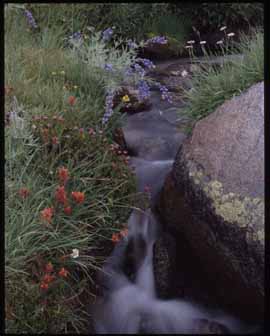 |
||
Sierra
Nevada Earthquake History From Lichens In Yosemite Valley, one morning about two o'clock I was aroused by an earthquake; and though I had never before enjoyed a storm of this sort, the strange, wild thrilling motion and rumbling could not be mistaken, and I ran out of my cabin, near the Sentinel Rock, both glad and frightened, shouting, “A noble earthquake!” feeling sure I was going to learn something. So John Muir described the violent Lone Pine quake (7.6) of March 26, 1872. Prehistoric earthquakes are difficult to date, especially the more recent ones. Bill Bull describes a very promising method measuring lichen growth on the rockfall often generated by such sublime events. It's also an exciting technique interested amateurs can do with just a few basic tools. |
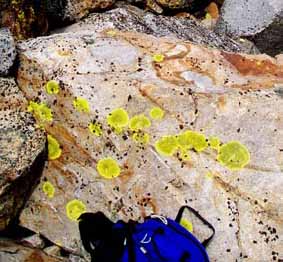 |
||
A
Walk Through the Hydroclimate Network in Yosemite National Park:
River Chemistry The core of a healthy Sierra ecosystem is water. Hydroclimatologists are now measuring critical components of Sierra water as it makes its way from winter clouds to snow, rivulets, streams and — at last — makes its way to the Pacific in California’s great river systems. What is gained and what is lost on this journey to the Golden Gate? This article is in PDF format and is viewable with Adobe Reader which is a free download from Adobe. |
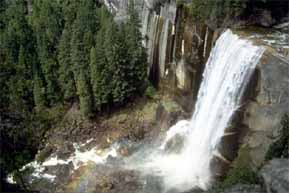 |
||
New
Threat to Mountain Yellow-legged Frogs? Work continues to find the causes for the precipitous decline of the Sierra's Mountain Yellow-legged frog. Recent work suggests that, in addition to introduced non-native fish, a fungus may be also be a serious threat. Once more intrepid biologists wade through icy mountain lakes and streams in search of answers. |
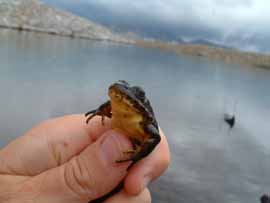 |
||
Restoring
the Giant Sequoias at Giant Forest, Sequoia National Park
|
|
||
Airborne
Pollutants in National Parks: Sequoia Park joins Large Study
Effort Toxic chemicals such as mercury and the long US-banned DDT are showing up in the Sierra. They are coming from as far away as China and even Europe, borne on upper level winds and deposited thousands of miles from their source in Sierra streams and lakes. A huge research effort has begun throughout the West to determine the extent of the problem and begin international efforts towards a solution. |
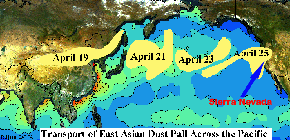 |
||
An
Analysis of Human Pathogens Found in Horse/Mule Manure Along
the John Muir Trail in Kings Canyon and Sequoia and Yosemite
National Parks Each year, thousands of horses and mules leave tons of manure along Sierra trails. What are the potential health risks to people drinking from Sierra streams? The answers are encouraging for both horse owners and backcountry hikers. |
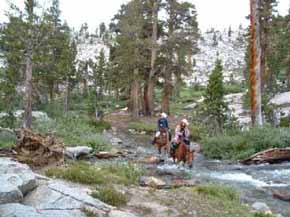 |
||
Preservation
of a Healthy Black Bear Population in the Sierra Nevada Mountain
Range through Interagency Cooperation Keeping one step ahead of bears intent on getting your food is a job now being carried out cooperatively by several Sierra land management agencies. Their goal is to get bears out foraging for roots and grubs, rather than your backpack or ice chest. The guiding principle of the Sierra Interagency Black Bear Group is to never underestimate an animal you can teach to ride a bicycle... |
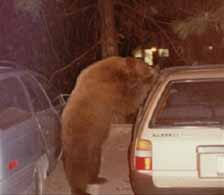 |
||
Starry,
Starry Night All across the country — and the world — the stars are winking out. Increasingly, the glow of city lights make it too difficult to see the Milky Way and a significant number of stars that would otherwise be visible to the naked eye. The National Park Service is joining a growing effort to determine the extent of the problem and implement solutions so we can continue to enjoy “the profoundly moving beauty” of a moonless night. |
|
Our Founder Questions? Go to About Our New Site |
Masthead
Photo from: |